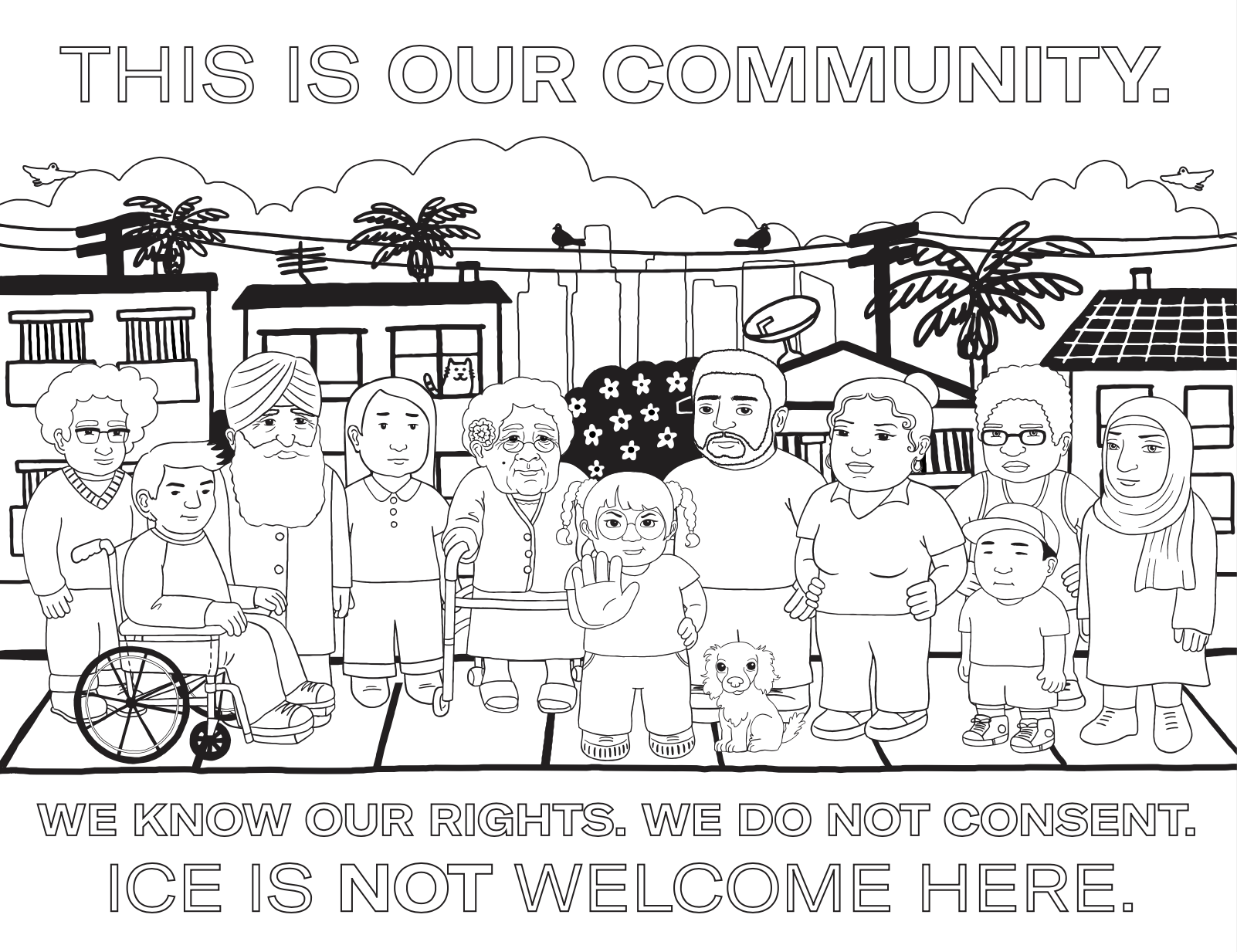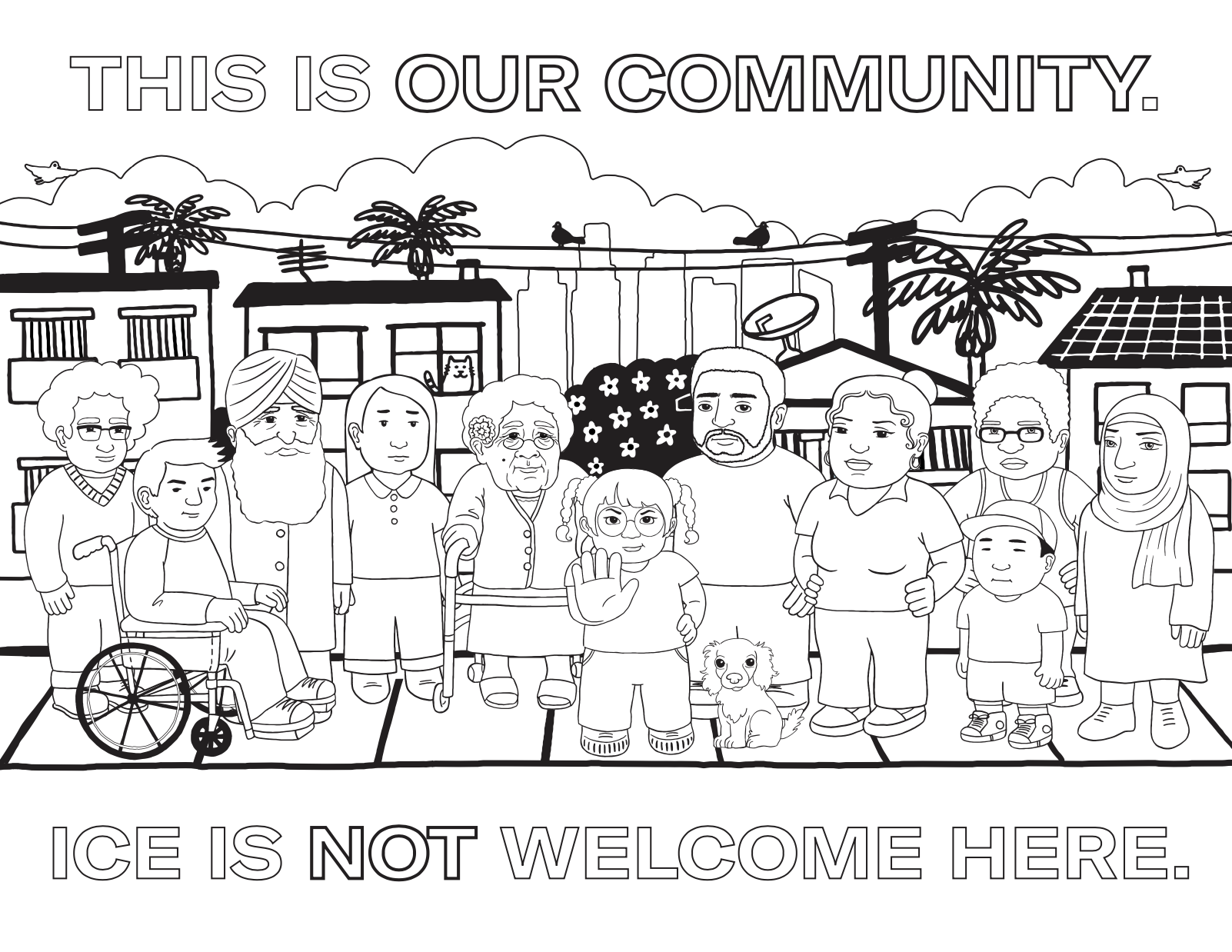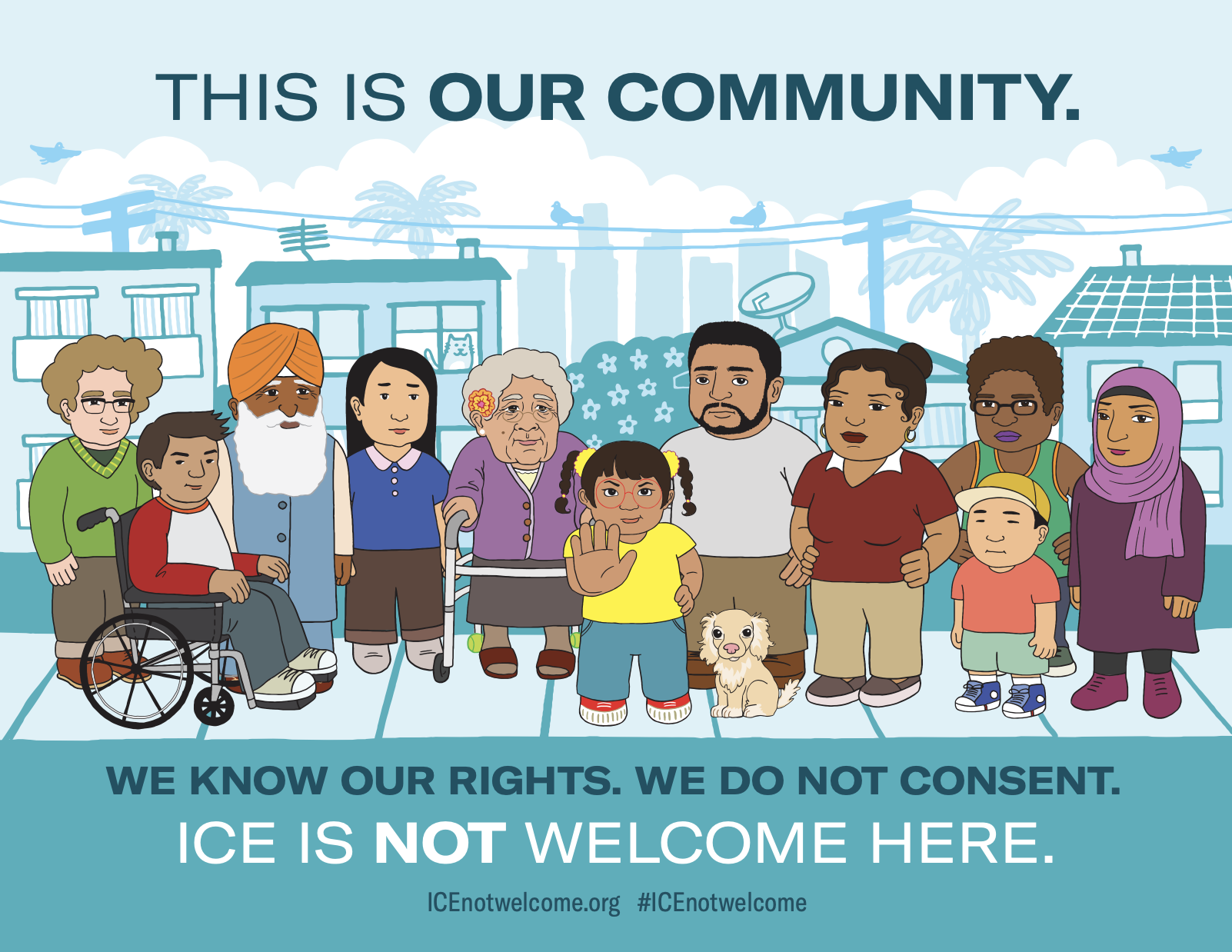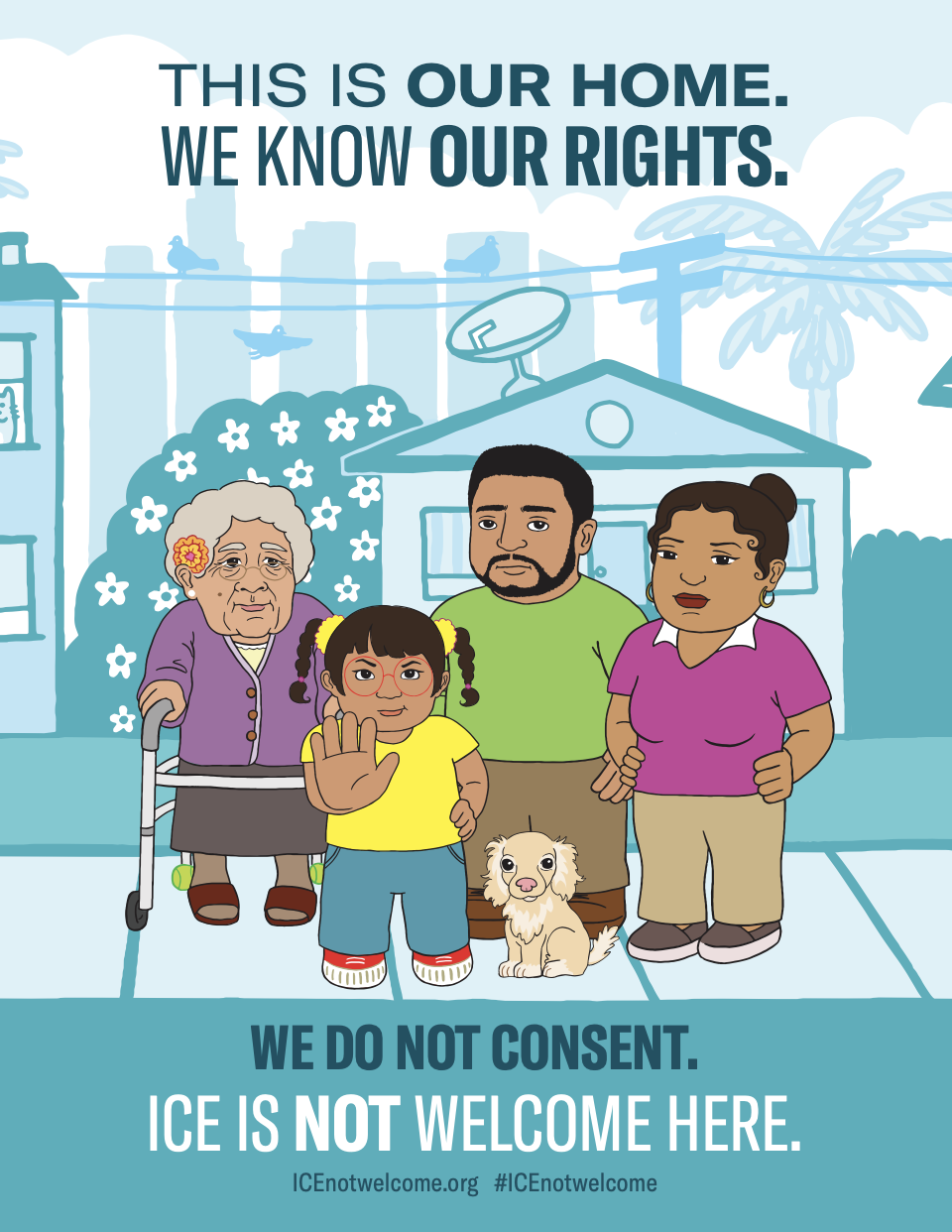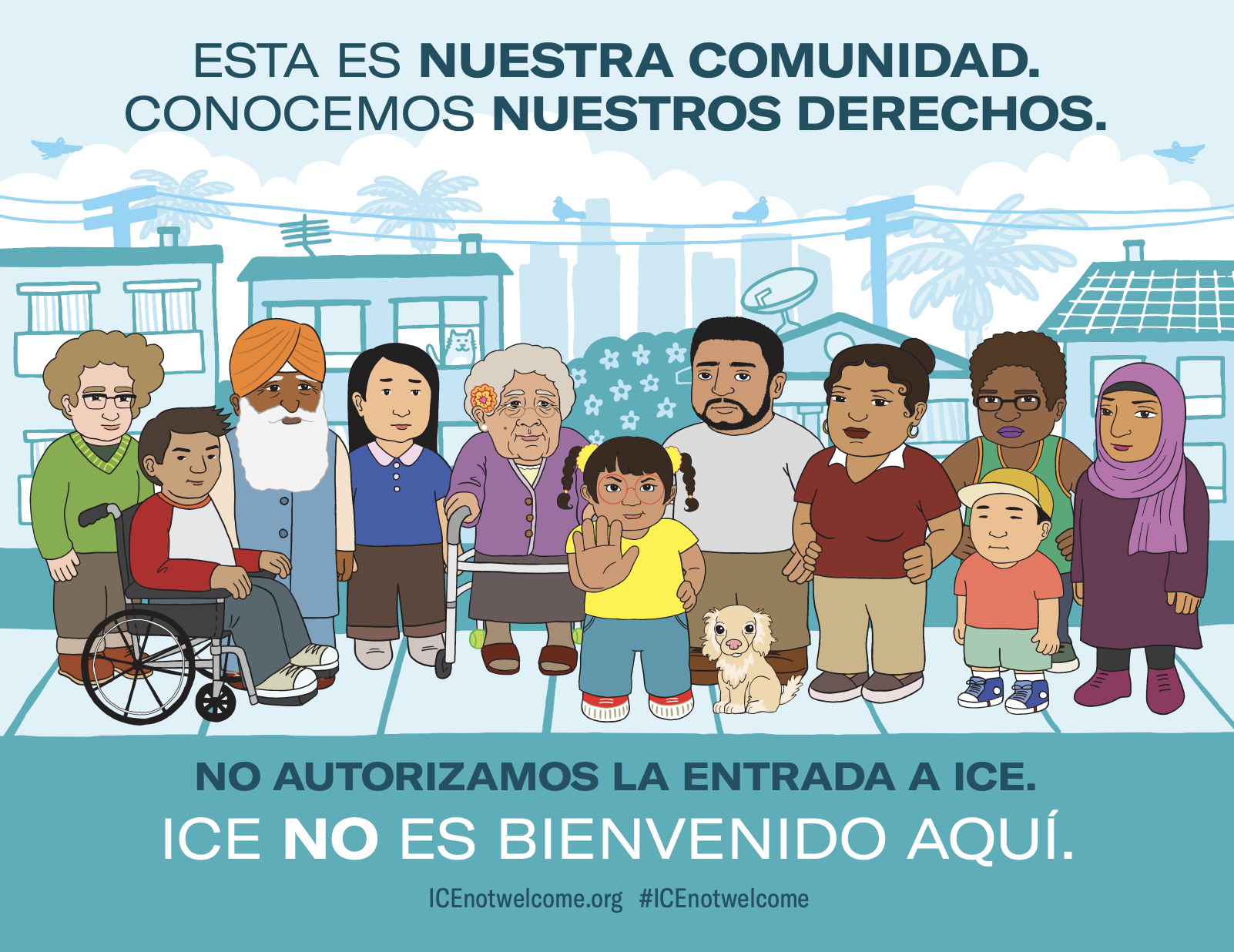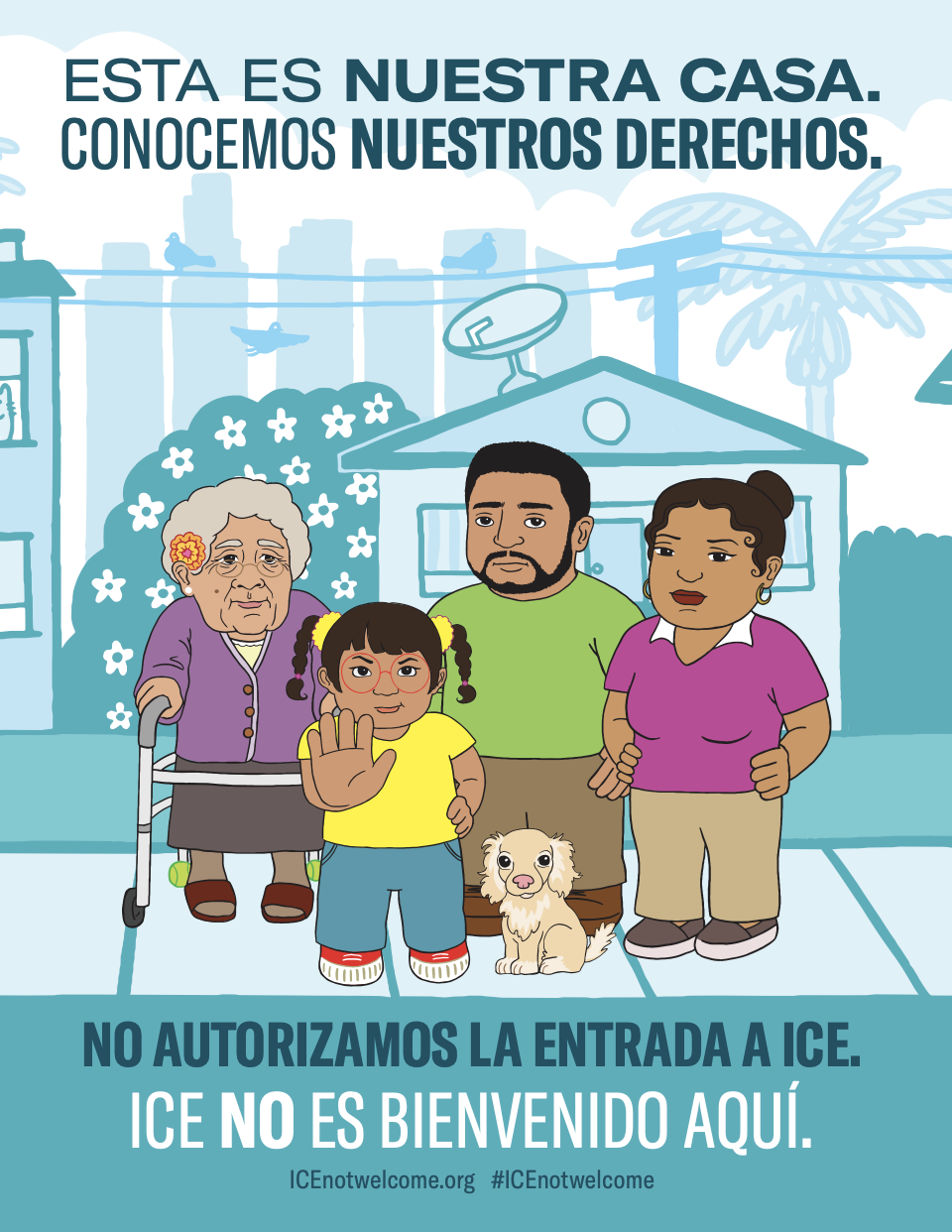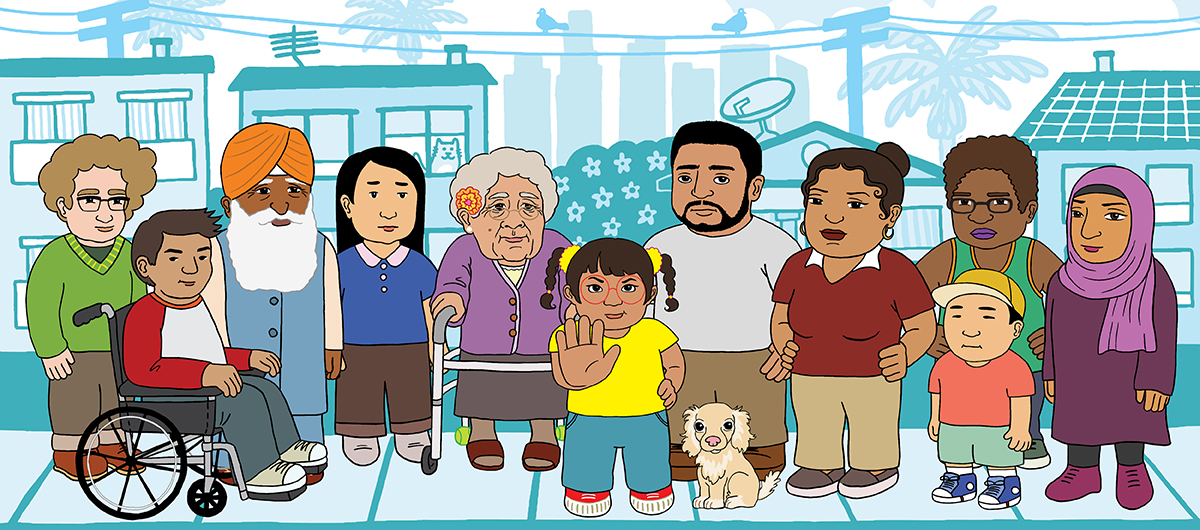

ICE NOT WELCOME: Verify, Document, and Report
Last updated on April 13, 2020
ICE NOT WELCOME: Verify, Document, and Report
WE KNOW OUR RIGHTS when U.S. Immigration and Customs Enforcement (ICE) is at our door.
We know not to open the door.We know to ask for a warrant.We know not to answer any questions.
But now, ICE agents have resorted to trickery and deception. Instead of identifying themselves as ICE, they mispresent themselves as police or probation officers. They use intimidation tactics to coerce their way inside of people’s homes. They tell fake stories designed to lure a person out of their home or to trick people into inviting the agents inside or give up information.
When ICE impersonates police, these are the types of stories they often tell:
- We’re police investigating a serious crime and just want to ask a few questions. Can we come in?
- We’re police and there is an issue with your car. Can you come outside?
- We’re probation officers looking for a person that lives at this house. Are they here? Can we come in?
Communities that know their rights can lawfully prevent ICE from entering their homes and protect themselves, their neighbors, and their loved ones. Learn more about your rights and share widely.
|
The following information is produced by the ACLU Foundation of Southern California for educational purposes only. This is not intended as and is not a substitute for legal advice. |
Verify, Document, and Report
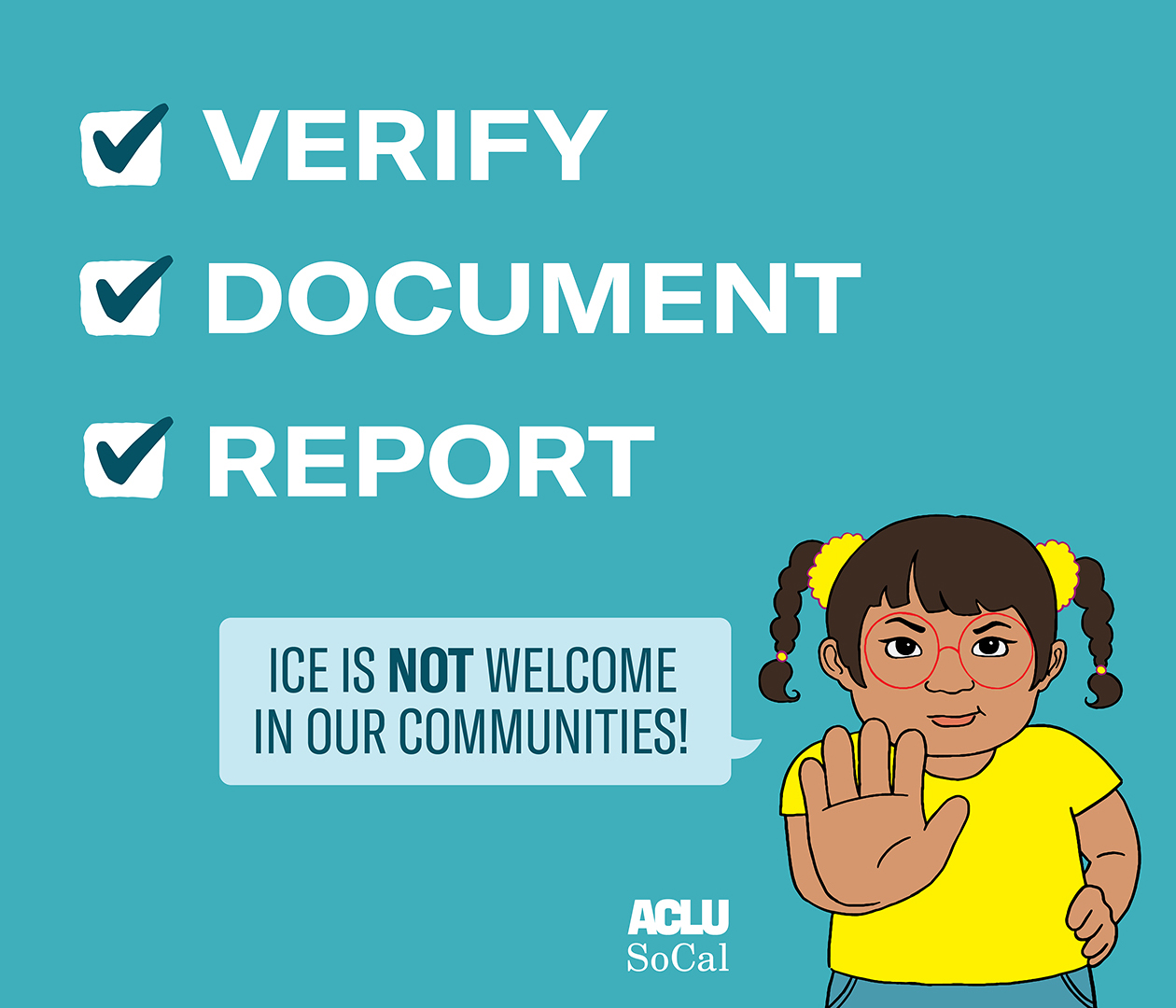
Don’t be fooled. Know your rights. When ICE shows up at your door, remember to safely* take these three important steps:
VERIFY their identity and purpose.
DOCUMENT the encounter.
REPORT what happened.
1. VERIFY. Determine the officer’s agency and whether they are really police or probation.
- Look at their uniforms. Uniforms are one way to tell what agency an officer is from. ICE usually wears civilian or plain clothing with black bulletproof vests. Oftentimes, it says “POLICE” on the front or back. Local police, on the other hand, wear distinct uniforms with identifying insignias.
- Ask what police or probation department they are from. Remember what they say. If they lie, make sure to document it.
- Ask to see proof of who they are. Ask to see a business card or a badge.
- Ask if they have a warrant signed by a judge.
2. DOCUMENT. Determine the officer’s agency and whether they are really police or probation. Record the encounter with video or audio. Remember names, times, and details. Documentation and witnesses can be critical to a legal defense, should that be necessary later.
- Ask for their names and titles. If you can, write them down.
- Ask why they are there.
- Find someone to witness the encounter — either from inside the house or outside.
- Document the details of any questioning, search, or arrest.
3. REPORT. Share what happened and seek legal assistance if necessary.
- Call your local Rapid Response Network to report the incident and to seek legal assistance, if needed.
- Share video or other documentation on social media.
- Report the incident to your consulate or a community organization.
* Remember to stay safe. If an officer tries to enter your home without your permission, do not block the doorway or physically obstruct the officer. Just tell the officer: “I do not consent to you entering my home” and document the encounter. And never answer any questions about citizenship or immigration status without advice of a lawyer. If you are searched, against your will, say: “I do not consent to this search.”
Together, we can protect each other and our families, friends, and neighbors. What happened to you might be happening to others. Only with that information can we fight back.
More Resources
- Get answers to frequently asked questions about ICE impersonation of police.
- Keep this information handy: download the printable door hanger.
- Download the printable community handbook.
- Share this information with the young people in your life. Download and print the coloring sheets.
- Print the posters. Show your solidarity by placing these in your home and place of business.
We are actively working to stop ICE from deploying deceptive and illegal tactics that put our communities at risk. Learn more about our lawsuit.
If you have experienced ICE’s deceptive and illegal tactics, please share your story.

